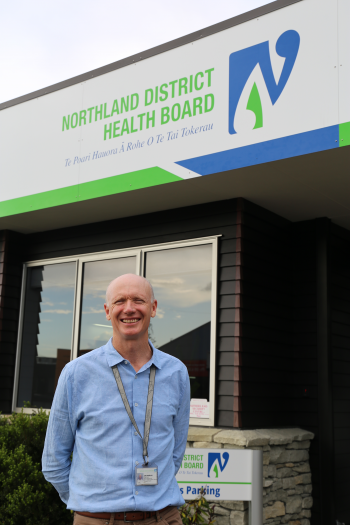Northland quality improvement project brings better support for tangata whaiora and whānau

Northland DHB’s service development project lead, mental health and addiction services, Joe Crowley
A Northland district health board (DHB) project to improve the transition between services for mental health and addiction (MHA) tangata whaiora (consumers) is improving support for tangata whaiora and whānau, as well as providing a forum for secondary services, non-governmental organisation (NGO) services, tangata whaiora and general practice to work together on quality improvement projects.
The Northland project is part of Te tūhono i ngā manaakitanga, te whakapai ake i ngā whakawhitinga ratonga/Connecting care: Improving services transitions, one of five priority areas for the Health Quality & Safety Commission’s (the Commission’s) national seven-year mental health and addiction (MHA) quality improvement programme.
The project looked at ways to improve processes relating to the coordinated transfer of care between MHA services so tangata whaiora and whānau receive continued support. It used a co-design approach involving MHA service staff, tangata whaiora, NGOs and GPs. It focused specifically on standardising discharge processes, improving discharge documentation and socialising transition pathways relating to transitions from DHB MHA community teams back to general practice.
The project lead is Northland DHB’s service development project lead, mental health and addiction services, Joe Crowley. He says the project process really benefited from the team putting time put into key stakeholder engagement and developing working relationships early on.
‘This was vital for the success of the project and it means we now have a unique representative forum we can use for future MHA quality improvement projects.’
Joe says the project solutions turned out to be surprisingly straightforward, although it took some time for the team to discuss potential improvements and build a development and testing plan.
‘Pre-COVID-19, we were able to meet face to face,’ says Joe. ‘We worked with our consumer and family leader team to identify a number of tangata whaiora with recent experience of transition between Northland DHB and general practice. We invited an interested group to share some kai and had a good discussion about what was working well for them, what wasn’t and what could be improved.
‘Through the GP liaison on our project team we approached general practices with a survey and also took the opportunity to sit down with GPs and discuss issues they face with the discharge process from MHA secondary services.
‘We also presented to staff at the community general adult team based in Kamo, who handle the bulk of the non-acute MHA case load in Whangārei.’
Joe says a number of inconsistencies were identified, including the quality and timeliness of discharge information provided to GPs.
‘The issues for tangata whaiora were around understanding what was happening to them and having good information. GPs also had issues with the information delivery mechanism, but it was the information itself that was crucial. And, if we improved information flow for GPs, it improved the transition experience for tangata whaiora as well.’
He says the first step was defining a good discharge from all perspectives. ‘The main tool was tightening up the documentation and getting that into the Northland DHB’s patient management system to help improve the flow of information across and between MHA care settings, including allied health and NGOs.
‘That gave us a protocol in the form of a discharge summary checklist, which provided staff with a best-practice guide as well as a sense of quality expectations. We kept the checklist easy to use, with clear language, not too many words and a simple format.
‘We’re measuring improvement through recovery plan completion rates, qualitative feedback from tangata whaiora, GPs and NGOs, and tracking 90-day fast-track readmissions back into secondary care. The fast-track means tangata whaiora can go straight back to their existing care team within 90 days of discharge, without going through the full intake assessment process.’
However, Joe says tangata whaiora going back into secondary services within 90 days is not necessarily an indicator of a low-quality discharge.
‘For instance, it might mean there’s been a change and the tangata whaiora is now willing to engage with the service to better support their mental health so they can stay well for longer out in the community.’
The DHB is now looking at improving the issues identified by GPs relating to paper-based delivery of information as a separate piece of work.
Joe completed the Commission’s MHA quality improvement facilitator training course delivered through Ko Awatea, Counties Manukau Health, and says he found the skills he gained and the ongoing support from the Commission’s MHA quality improvement programme team invaluable.
‘It’s good to be able to talk to like-minded people about issues. Descriptions of things like “transitions” can be a little vague, so to try and turn a discussion about transitions into a piece of work you can deliver takes a bit of talking through. It’s easy to go off in other directions.’
More information about Connecting care: Improving service transitions, including top tips from provider project teams, can be found here.
